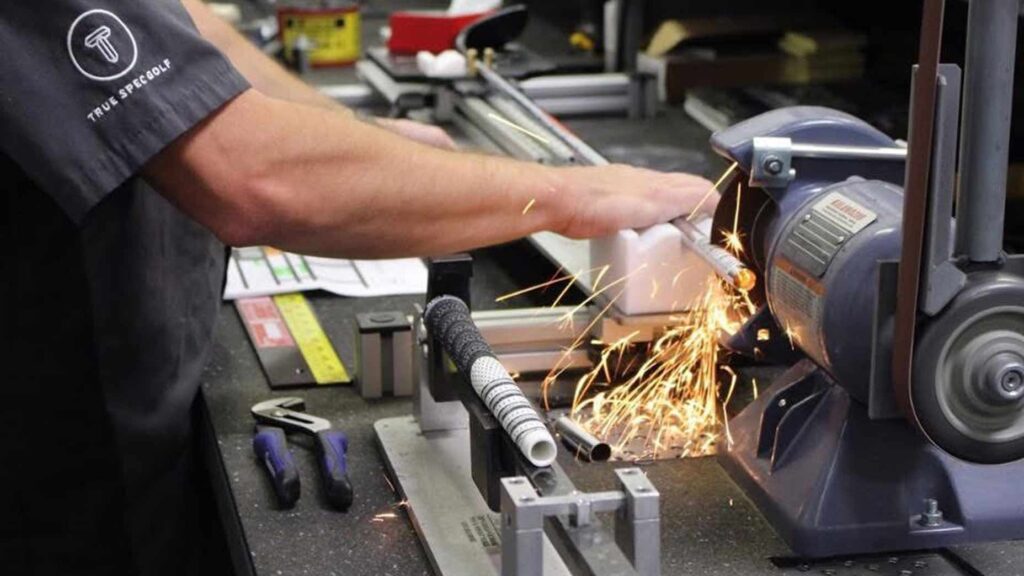Understanding Swing Weight: The Key to Optimizing Your Golf Game
Introduction: The Importance of Swing Weight in Golf Fitting
When it comes to golf, every golfer has their own unique set of preferences and requirements to enhance performance. Among the myriad of factors influencing how you play, swing weight stands out as a topic of frequent discussion. As a seasoned club fitter with over two decades in the industry, I’ve often heard golfers assert, “I can feel the difference between D1 and D2.” However, the reality is more nuanced. Understanding swing weight—not as a mere number but as a crucial feel measurement—can dramatically improve your golf game.
Demystifying Swing Weight: What Is It Exactly?
Swing weight measures how heavy the clubhead feels during your swing. It isn’t the overall weight of the club, but rather a reflection of how weight is distributed along its length—from grip to head. Swing weight scales run from A0 to E, and while the number itself may not hold significant meaning for your average golfer, it plays an essential role for club fitters. For instance, adjusting swing weight allows fitters to recreate the feel that golfers prefer, leading to consistency in performance.
Why the Number Doesn’t Matter as Much as You Think
While swing weight is important, it certainly isn’t the end-all-be-all of club performance. A frequent misconception is that matching swing weights across clubs will guarantee matching performance. This couldn’t be further from the truth. If your 7-iron registers as a D2 and your 6-iron as a D1, but you hit both flush, the performance remains consistent regardless of the numbers. Therefore, the key takeaway is that your body prioritizes feel and performance, which are what truly matter during your game.
Perception vs. Reality: The Dynamic Nature of Swing Weight
Another critical aspect golfers often overlook is that swing weight is not static. During a fitting session, as you swap out heads, shafts, and grips, the swing weight changes with every adjustment. Different head weights, variations in shaft length, and even grip types significantly affect swing weight. For example, changing a grip by just 5 grams can shift swing weight by roughly 1 point. Therefore, if you’re trying various combinations during your fitting, it’s likely that you will experience multiple swing weights without even realizing it.
The Biggest Culprits: Common Errors That Affect Swing Weight
Two primary pitfalls often undermine the optimal feel of your clubs post-fitting: changes in grip weight and adjustments in club length. When changing grips, many golfers fail to recognize the impact of weight. A heavier grip can lighten the perceived swing weight by several points, altering your swing dynamics. Similarly, adjusting club length can dramatically change swing weight—shortening a club by half an inch, for instance, typically leads to a decrease in swing weight by about 3 points.
Finding Your Perfect Feel: Prioritizing Sensation Over Numbers
The crux of an effective club fitting centers on finding a feel that allows you to consistently hit the ball well. Forget about rigidly adhering to a specific swing weight number—what truly matters is how frequently you find the center of the clubface. If you discover that your best shots happen with a swing weight of D0 or D5, embrace it. Your focus should shift to optimizing that feel, which will ultimately translate into enhanced performance on the golf course.
Collaboration: Your Role vs. The Club Fitter’s Expertise
Engaging in a fitting session is a partnership. Your job is to communicate what feels good during your swings, providing honest feedback based on your sensations. Conversely, the fitter’s role is to monitor and adjust the numerical factors while ensuring that the final setup aligns with the feeling you experienced during the trial. This collaboration allows for a thorough understanding of how even small adjustments can lead to vastly different sensations.
Moving Beyond Numbers: Let the Club Do the Talking
It’s time to shift the focus away from the numbers stamped on your club’s build sheet. Golf is fundamentally about improving your game, not impressing a scale. To truly enhance your performance, seek professional fitting from experienced fitters who are brand-agnostic and focused on results. True Spec Golf offers an environment to explore the best combinations tailored specifically to your playing style and preferences.
A Commitment to Optimizing Performance Through Fitting
True Spec Golf’s methodology doesn’t fixate on chasing swing weights; instead, the emphasis is on achieving results that improve your game. Skilled fitters will work alongside you to understand your unique requirements while ensuring that your final set matches your optimal feel. When you invest in your golfing experience, you’re setting the foundation for better performance on the course.
Conclusion: Enhance Your Game with Expert Fitting
In conclusion, swing weight may initially appear to be just another number to track; however, its implications for feel and performance are profound. You don’t need to memorize specifications or stress over achieving numerical perfection in your clubs. The emphasis should always be on what feels best for your game. Schedule a fitting session, remain open to the process, and let the experts at True Spec Golf find the perfect setup for your golf game. Ready to elevate your experience? Find your nearest True Spec location and book your fitting today!


